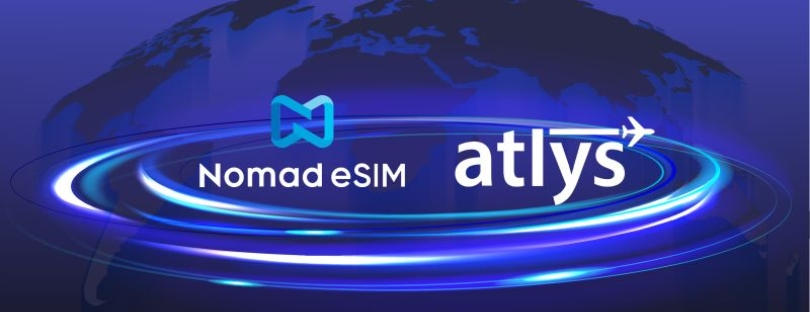
Voice and SMS on eSIM: The Return of the Local Number
When people talk about eSIMs, the focus is always on data—and for good reason. But as travel gets more connected, one question keeps popping up: what about voice and SMS?
Whether it’s calling your Airbnb host, receiving a one-time password (OTP) from your bank, or being reachable while abroad, travelers still rely on traditional phone functions. And yet, most travel eSIMs today are data-only—no calls, no texts, and definitely no local number.
So why is this still such a gap in 2025? What’s changing? And are we finally seeing the return of the local number, but without the plastic SIM?
Let’s break it down.
Data eSIMs dominate, but voice and SMS never really left
It’s easy to think of voice and SMS as outdated, especially when messaging apps have taken over so much of our communication. But try using WhatsApp to call a local restaurant that doesn’t have WhatsApp. Or try accessing your bank without an SMS code.
Suddenly, voice and SMS don’t feel so “optional.”
Yet most travel eSIMs available today — even the ones that work in 100+ countries — don’t offer native voice or SMS. They’re data-only. Which is fine if you’re a digital nomad who lives on Slack and Telegram. But not if you need to receive a call from a local service provider or return a missed call from a hotel front desk.
VoIP isn’t the hero you think it is
VoIP apps like WhatsApp, Viber, or even Google Voice are a great workaround — to a point. They let you make calls using your data connection, often at low or no cost. But they have real limitations.
First, many don’t support SMS—or only support SMS within the app. So those crucial 2FA codes from your bank, airline, or government service? Not going to show up.
Second, call quality can vary wildly. And you’re relying on the other person to have the same app or be online. Need to reach a restaurant in Rome that only picks up landline calls? VoIP won’t help.
VoIP is brilliant for calling home or friends. But it’s not a full replacement for having a working phone number in the country you’re visiting.
The new gold standard: seamless local numbers without SIMs
Here’s where things start getting interesting. More and more eSIM and travel connectivity providers are waking up to this gap and building services that go beyond data—including voice, SMS, and local numbers.
These aren’t your typical mobile numbers tied to a physical SIM. They’re digital identities, often powered by cloud-based VoIP backends but designed to feel like local mobile numbers.
Apps like Hushed, Numero eSIM, and Airalo’s Holo service are offering local numbers that can receive calls, send texts, and—in some cases—even work with SMS verification codes. Some let you choose numbers from different countries, ideal for travelers who want to look local or keep their business reachable while abroad.
Importantly, some eSIM providers are going even further. Airhub, for example, offers prepaid eSIM plans that include voice and SMS—not just data. In select countries like the U.S., you can get a full mobile experience: local number, calls, texts, and fast internet — all without swapping SIMs. It’s one of the few platforms offering truly integrated voice/SMS over eSIM, making it a strong option for travelers who want more than a workaround.
Others go even further, integrating this number with your eSIM profile, so you don’t need to juggle apps or SIM settings. It’s not perfect yet, but the direction is clear: mobile identity without borders.
Why is this so hard to get right
Offering voice and SMS on eSIM isn’t just about adding features. There are real technical and regulatory challenges behind the scenes.
- Traditional voice/SMS requires full network support (IMS) and deep integration with mobile carriers
- Many eSIM providers don’t have direct telecom infrastructure—they rely on reselling data access
- National telecom regulators often impose strict rules on number assignments and SMS delivery
- There’s no universal standard yet for offering voice/SMS across eSIM profiles
That’s why some eSIM providers can offer data in 150+ countries but only voice/SMS in one or two—or not at all.
What should smart travelers do now?
If you’re traveling and want a complete mobile experience—not just data—there are a few options available today:
- Use Airhub eSIM or eTravel eSIM: they offer affordable data, but have included voice and SMS in some packages
- Use a data-only eSIM from providers like Airalo, Nomad, or aloSIM for fast and affordable internet
- Pair it with a virtual number app like Hushed, Numero, or Talk360 for local calling and inbound texts
- Keep your home SIM in a secondary slot (if your phone supports dual SIM/eSIM), especially for SMS codes
- Always test your virtual number for compatibility with essential services before relying on it fully
It’s not one-click seamless yet, but it’s getting better. And it beats hunting for SIM card kiosks in an airport at 2 a.m.
Why the return of the local number is a big deal
It’s not just about functionality—it’s about identity and trust.
Having a local number while abroad makes you feel less like a tourist and more like a temporary local. It makes you reachable to people who might not want to call or text a foreign number. And for businesses, freelancers, and remote workers, it helps maintain a local presence without actually being local.
In fact, in a world where borders are digital but bureaucracy is not, local numbers are quietly becoming the next layer of digital identity. And eSIM is the only technology that can make that scalable.
What the future looks like
In the next few years, we’re likely to see a shift toward:
- Travel eSIMs that come with optional voice/SMS bundles
- Global or multi-number profiles where you can keep a US, UK, and EU number active simultaneously
- Smart call routing that automatically chooses the best line (or app) based on location, network, or caller
- One-click provisioning of a local number via your eSIM app, ready to use in under a minute
In short: you’ll land in Tokyo, tap “Add Japan number,” and boom—you’re locally connected for calls, texts, and 2FA without needing to touch a physical SIM.
Closing thoughts
Voice and SMS on eSIM may not be flashy, but they’re quietly becoming essential again—especially as travel gets more mobile, digital services rely on phone-based ID, and travelers demand more than just internet.
The idea of the “local number” is being reimagined—not as something tied to a plastic SIM card, but as part of your travel toolkit, alongside your passport, wallet, and charger.
At Alertify, we believe the future of travel connectivity is smart, seamless, and complete—and that includes voice, SMS, and yes, your very own local number. Without it, eSIM is only half the solution.










